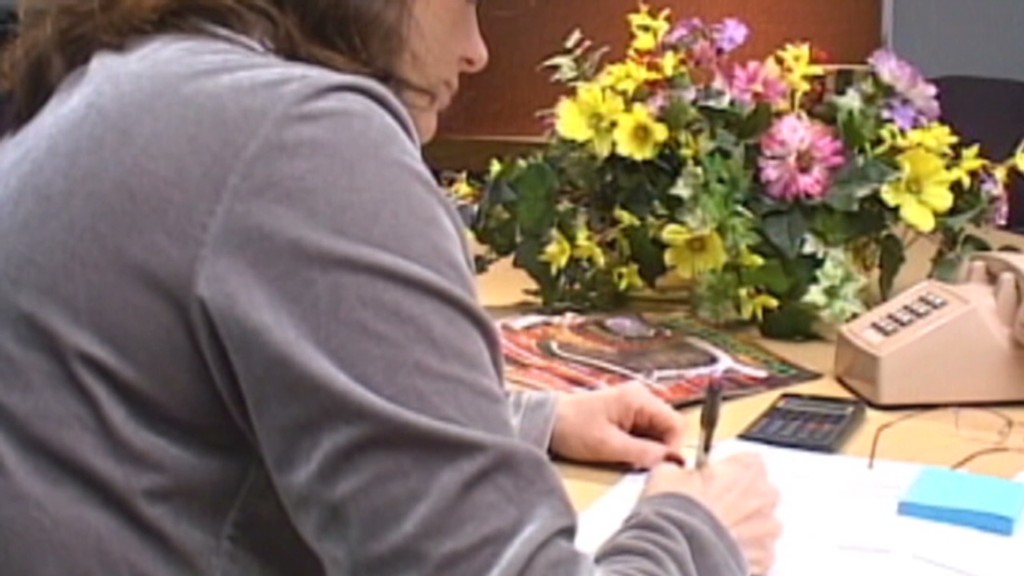
For many of us, the beginning of summer is an invitation to start hosting barbeques and planning beach outings.
But it's also the perfect time for a personal financial checkup. With just another six months before the year's end, it's important to examine some key aspects of your finances and see where you stand. Here's a step-by-step list to help you cover all bases.
Checklist
1. Examine your budget
Remember that budget you created in January? Now's the time to see how well it's holding up. Download your bank and credit card statements from the past six months, see how much you've been spending, and compare those figures to what your budget allows for. If you notice discrepancies, you'll need to make changes to keep yourself on track.
Related: Annuity payments: Income for life
Let's say your budget calls for $300 a month on entertainment, but in realty you've been spending closer to $400. Unless you've been coming in lower on another category, you run the risk of outspending your paychecks if you keep up that habit. Now if you see that you originally estimated $400 for groceries but have only been averaging $300, you may be able to adjust your budget and swap $100 in one category for another. But if you've been overspending in one area and aren't compensating for it elsewhere, you'll need to either curb your spending, or find ways to generate extra income going forward.
2. Look at your retirement plan contributions
Have you been putting money aside each month for retirement? While saving any amount is better than saving nothing at all, now's the time to see if you can up those contributions. Even a small increase can go a long way toward helping you meet your retirement goals. Imagine you're currently allocating $200 a month to your 401(k) and your present balance is $5,000. Assuming your investments generate an average annual return of 8% (which is feasible with a stock-heavy portfolio), after 30 years, you'll have an ending balance of $322,000, which is not bad at all. But watch what happens when you increase that monthly contribution to $250. All other things being equal, that extra $50 a month will help you grow your balance to $390,000 -- a $68,000 difference.
Related: When will I be debt free?
Another thing you'll want to do is make sure you're contributing enough money to take advantage of whatever 401(k) matching program your company offers. If, for example, you earn $60,000 a year and your employer is willing to match up to 3% of your salary, you should make sure to contribute at least $1,800 a year to your 401(k). Otherwise, you're giving up free money.
3. Check up on your investments
Whether you invest through a traditional brokerage account, a retirement plan, or both, you should check on your portfolio to make sure it's performing well. If your investments haven't seen much growth since the start of the year, it may be time to get more aggressive, especially if you're far away from retirement. That might mean shifting more of your investments from bonds to stocks, which have historically provided higher returns. Similarly, if your investments have consistently lost money since January, you may want to make some adjustments. If you're close to retirement, that could mean moving money out of stocks and into bonds. Or, it could mean trading individual stock positions for ETFs, which allow you to mitigate your risk through diversification.
4. Adjust your tax withholdings if necessary
When it comes to taxes, the goal is to strike that perfect middle ground. Pay too little, and you could face penalties when you file your return. Pay too much, and you're essentially loaning the government a portion of your hard-earned money for free. That's why mid-year is the perfect time to see how much you're paying in taxes and make adjustments as necessary. If, for example, you start a consulting business on the side that generates a nice chunk of income, you may want to increase your withholdings. The same applies if you've sold investments at a profit and expect to pay capital gains taxes this year.
5. Keep track of your FSA
If you put money in a Flexible Spending Account (FSA) at the beginning of the year, now's the time to see how many eligible medical expenses you've racked up. FSAs work on a use-it-or-lose-it basis. So if you allocated $1,500 to your FSA starting in January but have only used $200 so far, you've got some catch-up spending to do -- in which case you might do something like update your eyeglasses a bit early to avoid foregoing your unused balance.
Sponsored Content from The Motley Fool:
• 5 Years From Now, You'll Probably Wish You Grabbed These Stocks
• Kansas Man Turns $10,000 into $8 Million
• Shark Tank Just Revealed a Trillion-Dollar Idea
It's easy to get caught up in the haze of summer, but don't make the mistake of letting your finances fall by the wayside. A few smart moves now could set the stage for a financially successful year overall.


